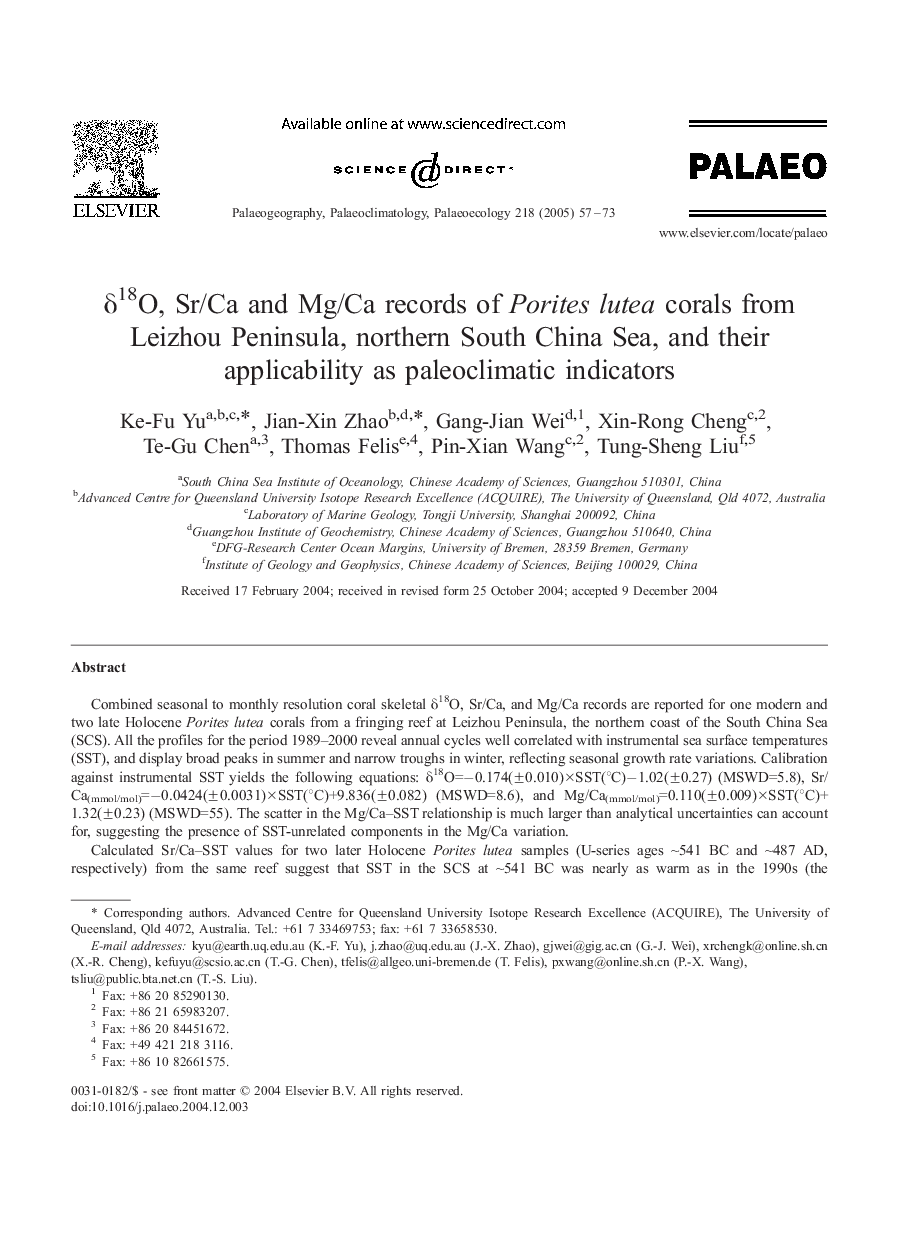| Article ID | Journal | Published Year | Pages | File Type |
|---|---|---|---|---|
| 9463203 | Palaeogeography, Palaeoclimatology, Palaeoecology | 2005 | 17 Pages |
Abstract
Calculated Sr/Ca-SST values for two later Holocene Porites lutea samples (U-series ages â¼541 BC and â¼487 AD, respectively) from the same reef suggest that SST in the SCS at â¼541 BC was nearly as warm as in the 1990s (the warmest decade of the last century), but at â¼487 AD, it was significantly cooler. This observation is consistent with climatic data reported in Chinese historic documents, confirming that the Sr/Ca-SST relationship is a reliable thermometer. Removing the SST component in the δ18O variation based on calculated Sr/Ca-SST values, the residual δ18O reflects the deviation of the Holocene seawater δ18O from the modern value, which is also a measure of the Holocene sea surface salinity (SSS) or the summer monsoon moisture level in mainland China. Such residual δ18O was close to zero at â¼541 BC and â0.3â° at â¼487 AD, suggesting that it was as wet as in the 1990s at â¼541 BC but significantly drier at â¼487 AD in mainland China, which are also consistent with independent historic records. Calculated Mg/Ca-SST values for the two late Holocene corals are significantly lower than the Sr/Ca-SST values and are also in conflict with Chinese historic records, suggesting that coral Mg/Ca is not reliable proxy for SST. At comparable Sr/Ca ranges, fossil corals always display negative Mg/Ca offsets if compared with the modern coral of the same site. We interpret this observation as due to preferential loss of Mg during meteoric dissolution of cryptic Mg-calcite-bearing microbialites in the exposed fossil corals. Microbialites (MgO up to 17%, Sr only 100-300 ppm) are ubiquitous during reef-building processes and their presence in only a trace amount will have a significant impact on coral Mg/Ca ratios without detectable influence on coral Sr/Ca ratios.
Related Topics
Physical Sciences and Engineering
Earth and Planetary Sciences
Earth-Surface Processes
Authors
Ke-Fu Yu, Jian-Xin Zhao, Gang-Jian Wei, Xin-Rong Cheng, Te-Gu Chen, Thomas Felis, Pin-Xian Wang, Tung-Sheng Liu,
